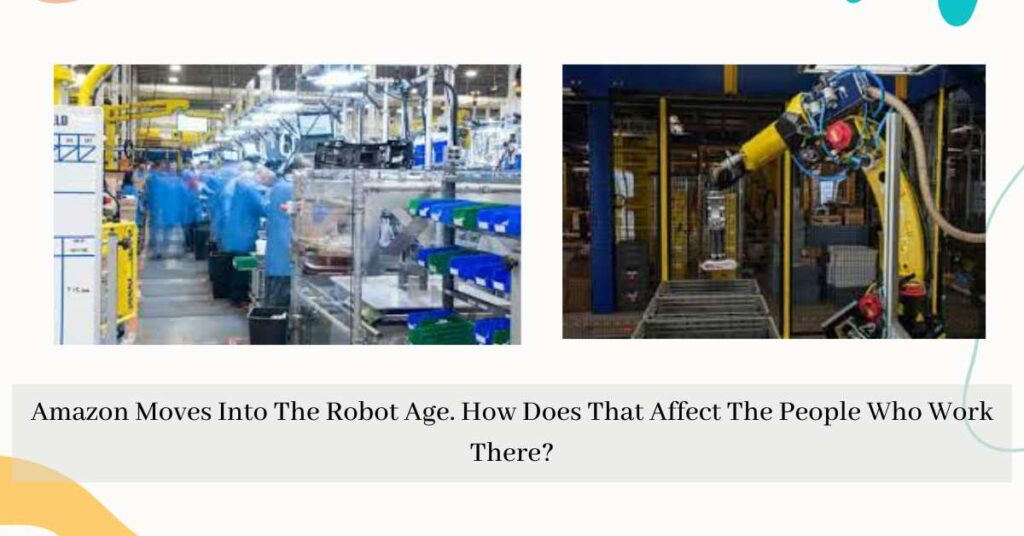Last Monday, a lone yellow robot arm, imprisoned in a metal cage in a corner of a 350,000 square foot Amazon warehouse outside Boston, sorted through parcels and prepared things for shipment to consumers who demand ever-faster delivery. Others will soon join it in a scenario that, according to Amazon, could result in the loss of thousands of employees as well as the creation of thousands more.
You can also check
- Amazon Users Experiencing CS11 Error Code While Using Amazon App
- Brazil Lula Da Silva Wins Presidential Election
A screen showed the robot’s work-in-progress as it operated. It placed a tube of hemorrhoid cream last after carefully placing a package of napkin rings and a bag of protein powder. Someone altered the screen to cover the cream while 100 photographers from across the globe were taking shots.
One day soon, the Sparrow robot, which currently sorts the 13 million items that Amazon sends out annually, may replace the hundreds of thousands of workers that Amazon currently employs.
Amazon claims that Sparrow can already recognize roughly 65% of its product inventory using computer vision and artificial intelligence, determine whether an item is damaged and discard it, and adjust its suction cup “hand” to handle various objects—all tasks currently carried out by human hands. It improves every day as it gains more knowledge.
One of the new army of robots on a show for the first time at Amazon’s “Delivering the Future” conference on Thursday was Sparrow, which will likely begin to be released next year. Other advancements included Proteus, an autonomous green robot that resembles a huge Roomba and can move heavy items around enormous warehouses.
The business displayed its newest drone as well, which it expects would enable it to transport 500 million packages by air by the end of the decade. Another area of Amazon’s BOS27 warehouse had been outfitted with fake grass, false home fronts with welcome mats, and a huge electric-powered delivery truck with technology that could advise drivers on the best routes and provide driving “coaching.” A drone was parked on the lawn behind a white picket fence, representing how Amazon envisions millions of its customers receiving their orders in the future.
According to Tye Brady, chief technologist at Amazon Robotics, the 2020s will be the “era of applied robotics.” “Robots will perform important activities and increase human capacity. It seems to have taken fifty years to get here. It’s thrilling!
With more than 1.6 million people on its payroll as of 2021, Amazon has emerged as one of the biggest private employers in the world in recent years. That development was not pain-free.
Wall Street has criticized Amazon for what it considers to be excessive hiring, and Amazon is fighting tooth and nail to prevent US warehouse workers who are enraged by low wages and relentless pressure from unions from organizing. Robotic deliveries, robot packers, and robot movers might be the solution to such problems.
Brady is opposed. For decades, people have warned that machines will ruin the labour sector. John Maynard Keynes, an economist, predicted widespread technological unemployment in 1933, saying it would happen “owing to our discovery of techniques of economizing the use of labour outrunning the pace at which we can find new uses for labour.”
Brady responded, “I simply don’t see that at all.” “Over ten years ago, we made our first significant investment in robotics, and over a million jobs were created during that time.” According to him, additional robots will increase warehouse productivity, allowing them to hold more products, increase Amazon sales, and require more workers to keep things running properly.
“People will always need to solve difficulties and utilise common sense,” he remarked. “With robotics, we are a long way from that. It’s a long way off. The human brain has evolved over millions of years and can run on 20 watts and a banana, which is amazing.
Brady might be accurate when it comes to employment figures. The concept that the new age of smart machines will result in the loss of jobs was “barely supported,” according to a recent analysis from the US government’s Bureau of Labor Statistics.
The “lump of labour” fallacy is a concept with which economists are familiar. There is no set amount of jobs, therefore even if certain occupations are destroyed by innovation, new ones will eventually replace them. Retail jobs, for instance, were replaced by jobs in warehouses as online purchasing destroyed shopping centres.
But the workers may not benefit much from all of this change. Beth Gutelius and Nik Theodore similarly came to the same conclusion in a paper for the University of Berkley’s Labor Center that technological advancements at warehouses were unlikely to result in large job losses.
You can also check
- This Is Why Your Favourite Foods Are No Longer Available At Costco And Trader Joe
- NYC Firms Are Evading The Ground-Breaking Pay Transparency Rule By Posting Job Compensation Ranges Of $100,000 Or More
However, they countered that companies “may use technology in ways that diminish the skill requirements of employment in order to cut training costs and turnover times. Workers may suffer from negative effects like job insecurity and salary stagnation as a result of this.
Such defences have little chance of stopping Amazon’s robot revolution. The business is the biggest producer of industrial robots worldwide. 330,000 robots are already produced annually at its Boston facilities.
And this is done in order to distribute toothpaste or hemorrhoid cream ever more quickly. And that’s what people desire, according to Brady: “We will respond and obsess over the needs of the customer, and if they need their toothpaste sooner, we will assist them in getting it sooner,” he said.
Final Lines:
Hope you find our post valuable for you… Many thanks for taking the time to read this! If you appreciate it, please leave a comment and share it with your friends. There are other articles available on newsconduct.com

